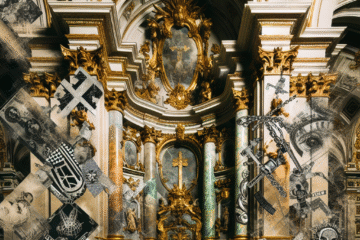Introduction: Smashing the Pedestal
For decades, ceramics have simmered on the fringes of the fine art world, often relegated to craft fairs and domestic shelves rather than white-walled galleries. Yet in recent years, visionary artists have reclaimed clay as a site of radical expression, dismantling elitist hierarchies and redefining what fine art can be. From Grayson Perry’s subversive vases to Magdalene Odundo’s serene yet politically potent forms, ceramics have become a medium for cultural agency, narrative revival, and social critique. This post explores how ceramics evolved from being dismissed as mere “craft” to becoming a powerful vehicle for contemporary and political commentary.
Chapter 1: Earthbound Origins – Function and Form in Pre-Modern Societies
Ceramics are among humanity’s oldest technologies, emerging as early as the Neolithic era around 10,000 BCE. In Mesopotamia, China, sub-Saharan Africa, and the Americas, early potters turned clay into vessels for storing food, carrying water, or conducting rituals. These pieces often bore symbolic and spiritual significance—functional yes, but not devoid of meaning or artistry. However, in Western art history, such utilitarian roots limited ceramics’ recognition as a “high” art. The divide between fine arts (painting and sculpture) and decorative arts (including ceramics) hardened during the Renaissance, when theoretical disciplines and patronage systems elevated mediums like oil painting and marble carving. Clay, literally of the earth, was too humble a material to ascend the pedestal of idealism.
Chapter 2: Cracks in the Hierarchy – The Studio Pottery Movement
The late 19th and early 20th centuries saw the first major revision of ceramics’ artistic status with the rise of the Arts and Crafts Movement and the later Studio Pottery movement. Figures like Bernard Leach in Britain and Shoji Hamada in Japan, influenced by Eastern aesthetics and philosophies, promoted ceramics as a union of form, function, and spirit. Rooted in Zen ideals and wabi-sabi aesthetics, studio pottery emphasized individuality and authenticity in contrast to industrialization. Yet, despite their philosophical depth, these movements largely maintained traditionalism in design, and their embrace of subtle natural glazes contrasted sharply with the radical political art emerging elsewhere in the 20th century. The mold remained—but cracks began to show.
Chapter 3: Grayson Perry – Subversive Vessels and Queering Tradition
Enter Grayson Perry, a British artist who exploded onto the scene in the 1980s with garishly colorful ceramic vases emblazoned with social satire, personal confessionals, and political allegory. Perry fused craftsmanship with conceptual art, upending the supposed divide between the two. His work confronts class inequality, gender identity, religion, and the pretensions of the art world—all on the traditionally “lowly” medium of ceramics. His 2003 Turner Prize win marked both a personal triumph and a critical redefinition of ceramics’ potential. Perry’s work insists that clay can carry complex narratives, challenging the notion that substance must be tied to medium hierarchies. Dressed as his female alter-ego Claire and wielding a potter’s wheel, Perry also queers both gender norms and aesthetic expectations, positioning ceramics as defiantly inclusive.
Chapter 4: Magdalene Odundo – Sculpting Diaspora and Ancestry
Across continents and sensibilities, Magdalene Odundo uses ceramics in a more restrained but equally revolutionary manner. Born in Kenya and educated in the UK, Odundo’s hand-coiled vessels reference ancient African, Greek, and Mesoamerican traditions. Their burnished surfaces whisper rather than shout, but they speak volumes about the body, ancestry, and the often-erased contributions of African cultures to visual history. Her work situates ceramics as both a global and historical medium, bypassing Eurocentric canons and drawing power through silence and gestural form. Odundo’s vessels almost breathe—they are abstract yet anthropomorphic, sensual while sacred—transcending reduction as “ethnic” or “functional” craft.
Chapter 5: The Digital Kiln – Contemporary Ceramics and Technology
In today’s digital era, ceramic artists are increasingly blending traditional techniques with technological experimentation. Artists like Takuro Kuwata integrate digital design processes, exploring glitch aesthetics and material unpredictability. Others incorporate augmented reality or 3D modeling to plan, distort, or conceptualize their pieces. Meanwhile, social media platforms like Instagram have democratized ceramics, enabling once-marginalized artists to reach global audiences without institutional mediation. This technological turn has fortified ceramics’ re-emergence as a contemporary medium perfectly primed for storytelling and social commentary—rich with tactility in a world of screens.
Conclusion: Clay as Counterculture
From ancient rituals to 3D-printed provocations, the history of ceramics is a powerful reminder that art’s value is not dictated by medium but by intent, context, and impact. Today, artists like Perry and Odundo—and a growing roster of ceramicists worldwide—expose the artificiality of art world gatekeeping. By embracing earthbound materials, they ground their critique in the very soil of human culture. Ceramics, once dismissed, now provide fertile ground for some of the most thoughtful, democratic, and daring work in contemporary art. In the hands of mold breakers, mud becomes mirror—and weapon.

Image description:
Goryeo Celadon, kettle designed like turtle.
License:
KOGL Type 1
Source:
Wikimedia Commons


